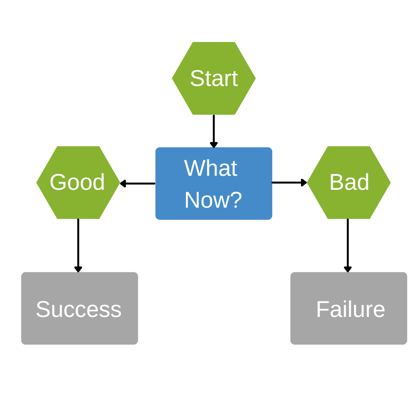With the modern demands of collaboration and document sharing, having a uniform document control process is essential. Organisations are under pressure to stay efficient, organised, compliant, and competitive.
Depending on your industry, your focus may be weighed more heavily to one or more of these than others.
From small businesses to multinational corporations, the ability to manage documents effectively can significantly impact productivity, decision-making, and regulatory compliance. However, many companies overlook the importance of evaluating and optimising their document control processes, leading to inefficiencies, errors, and missed opportunities.
In this blog post we'll explore the key elements of an efficient document control process, how it will help with process optimisation, as well as provide insights into how you can assess and improve the effectiveness of your own system.
A document control process will form the basis of how your organisaton creates, accesses, edits, reviews, approves and stores documents. You will need to:
When considering the effectiveness of your document control, a key question you should ask is “Does our team have the tools they need to efficiently collaborate on documents without compromise?”
If the answer is no, then here is our advice on five ways you can ensure optimal document control for your organisation.
.png?width=420&height=420&name=document%20control%20(1).png)
The foundation of an efficient document control process lies in well-defined policies and procedures. Establishing clear guidelines for document creation, storage, access, and revision ensures consistency and reduces the risk of confusion or misuse.
Documented procedures should outline:By ensuring that everyone understands their responsibilities and follows these standardised processes, organisations are able to minimise errors and promote accountability.
If you're intrigued by what you've read so far, consider discussing your upcoming project with us. Reach out to our team via email at info@doctech.co.uk or give us a call at 0161 647 7040.
A centralised document management system (DMS) is fundamental to efficient document control processes. Rather than relying on disjointed files and folders across various digital locations, a document management system provides a single, secure repository for all documents, accessible to authorised users from anywhere at any time.
Modern DMS platforms offer features such as version control, audit trails, metadata tagging, and search functionality, which all streamline document retrieval. It is key that users have the security to know they are accessing the most up-to-date information. Implementing a robust DMS not only improves efficiency but also enhances security and compliance.
A document management system can help with document control by managing user roles and permissions. These are the tools that enable the specific access, editing and approving of documents.

Manual document control processes are prone to delays, process bottlenecks, and human error. By automating repetitive tasks such as document routing, review, and approval, organisations can accelerate turnaround times and reduce administrative burden.
Automated workflows can be configured to trigger notifications for pending tasks, deadline reminders, and document status updates, keeping stakeholders informed and engaged throughout the process.
Leveraging technology to streamline document workflows not only saves time but also enhances visibility and accountability across the organisation.
A document management system builds on the fundamental document controls put in place. Documents are stored centrally and the digital document control functionality is able to manage:
Efficiency is not a one-time achievement but an ongoing endeavour. Regular audits and reviews of your document control process are essential to identify areas for improvement, address compliance gaps, and adapt to changing business needs.
Conducting periodic assessments of document management practices, user feedback, and performance metrics allows organisations to pinpoint inefficiencies, implement corrective actions, and optimise processes for maximum effectiveness. Continuous improvement is key to staying ahead in today's dynamic business environment.
Of course, we recommend a digital document management system to help manage your document control process. Having BI reporting dashboards will further help to gain the overall transparency of your documents.
No document control process can succeed without the active participation and buy-in of employees.
Providing comprehensive training on document management policies, procedures, and any tools such as a DMS ensures that staff members understand their roles and responsibilities in maintaining document integrity and security.
Encouraging employee engagement through open communication channels, feedback mechanisms, and recognition programs fosters a culture of accountability and continuous improvement. When employees are empowered and motivated to adhere to document control best practices, the entire organisation benefits from increased efficiency and compliance.
In conclusion, evaluating and optimising your document control process is critical to maximising efficiency, minimising risks, and achieving organisational goals. By implementing clear policies and procedures, adopting a centralised document management system, automating workflows, conducting regular audits, and investing in employee training and engagement, you can create a robust document control framework that drives productivity, innovation, and regulatory compliance.
Ensuring optimal document control is not a destination but a journey, and continuous improvement is the key to success in today's rapidly evolving business landscape.
At DocTech, we believe that with a dedicated document management system in place, the inbuilt rules, user permissions and associated workflows will make achieving optimal document control far more achievable for most organisations.
Since 1996, DocTech has been a trusted UK-based provider of DocuWare, helping businesses optimise their document management systems and streamline business process operations. DocuWare is an invaluable tool for improving ...
As we head towards the end of 2020, many employees will have worked from home for nine months with no real date of when they will see the inside of their office building again. Not only have organisations had to manage ...
Data compliance regulations are the law, but laws can take a lot of understanding. Changes in the law can mean an overhaul of processes that companies have used to manage their data for years. Even under new or ...